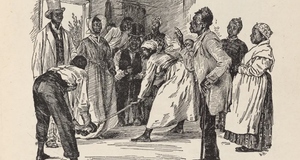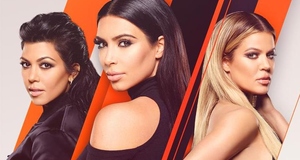The Modern American Family in AMC's The Walking Dead
By
2021, Vol. 13 No. 03 | pg. 1/1 AbstractAMC's The Walking Dead (TWD) has maintained a dedicated viewership since its premiere in 2010 and serves as a well-known example of zombie media in today’s culture. The zombie genre has long been recognized for its subversive potential, but is often critiqued for failing to subvert certain institutions, such as the heterosexual, nuclear family. TWD has been critiqued in previous scholarship for sharing this failure. However, analysis of more recent seasons of TWD shows that the show has steadily increased its representation of different family types, and this increase of non-heterosexual, non-nuclear families reflects a change in American families themselves. Over time, the nuclear family has decreased in frequency in America with a corresponding increase in other family types, such as blended, LGBTQ+, single-parent, biracial, and more. This article analyzes the families present in TWD during the first half of its tenth season and concludes that though the show has improved in terms of subverting the traditional institution of the heterosexual nuclear family, more representation of LGBTQ+ characters and families is still necessary to accurately reflect a changing America. The AMC zombie show The Walking Dead (TWD) has held a dominant position in TV ratings since its premiere in 2010 (Ross). The premiere of its fifth season in 2014 reached 22.37 million viewers, and the show has often been considered the “highest-rated show on television and the biggest scripted series in the history of cable TV” (Ross). Though its viewership has declined in more recent seasons, TWD has remained a cultural force. TWD follows a group of survivors—originally those tied to protagonist Rick Grimes, though the show has not only expanded its focus to multiple, larger groups but also removed Rick from its cast—through the zombie apocalypse over the course of an ambiguous time period. The show, far from just being about the walkers, has focused extensively on the relationships and politics between warring or unfamiliar groups of survivors and how morals play out in a post-apocalyptic world. Throughout the turmoil and near-constant loss of characters both big and small, there have been few constants in the show—but a dominant and consistent theme has been the family. The prevalence and importance of the family in TWD has been recognized by much previous scholarship, and this importance is reflected in many real Americans’ lives. Analysis of more recent seasons of the show reveals that while the emphasis on family has not decreased, the type of families being emphasized has. This paper argues that TWD’s later seasons reflect a more realistic depiction of the changing American family life of today. The cultural ideal of the American family has long been assumed to be the nuclear family; however, the reality of the American family is changing, and popular media such as TWD is beginning to reflect those changes. The zombie genre has long been recognized for its radical potential; “[z]ombies open the possibility of envisioning a new society because they evade regulation by the signifying system that makes categories such as race, gender, and class meaningful” (Cady and Oates 310). Indeed, many scholars assert that “zombie narratives position the apocalypse as a new way to imagine social relations” (Cady and Oates 309); there is significant room for societal change in the worlds created within these narratives. However, while they may have “significant subversive potential,” many of them fail to meet it (Cady and Oates 309). In many recent stories, there is a “recurring feature of the zombie apocalypse that is both hidden and readily observable: its narratives depict the destruction of the heteronormative nuclear family unit, only to resurrect it as the center from which a social world might be rebuilt” (Cady and Oates 308). Many zombie narratives, even if they reject other institutions (such as the government and religion), still show a reliance on the family as the institution that “sustains our survival as a species” (Ambrosius and Valenzano 89). The family does not seem to be something the zombie genre is willing to reject.TWD, in this regard, is no different from many other zombie narratives; according to analysis of the first three seasons, the show “illustrates the salvific, rather than apocalyptic, potential of the family as a social institution” (Ambrosius and Valenzano 73). Especially in early seasons, TWD features a “[a] quest for normalcy in the form of saving or regaining heterosexual nuclear family” (Cady and Oates 315). Indeed, statistical analysis of the first three seasons reveals that “family has the highest number of references per season, average references per episode, and percentage of total references” (Ambrosius and Valenzano 77). At least in the early seasons, the show, like many other recent zombie narratives, fails to live up to the potential that has so long been recognized in the genre; “[r]ather than embodying the zombie genre’s leftist critique of Western society and individualism, the show exhibits an almost conservative, or at least traditional, understanding of society where family is the enduring central element of a healthy community” (Ambrosius and Valenzano 88). While some analysis of the show focuses on the heteronormative emphasis on family (Cady and Oates), some recognizes that TWD’s depiction of this institution “illustrate[s] how the definition of family is culturally fluid rather than set in stone” (Ambrosius and Valenzano 76). However, even this analysis sees in TWD an “argument for hope grounded in a traditional conception of the family as the only viable source of temporal salvation” (Ambrosius and Valenzano 73). Much of these conclusions still apply to the show; however, this research is limited, as it focuses on only the first two (Cady and Oates) or first three (Ambrosius and Valenzano) seasons of the show. The prevalence of family in TWD reflects its importance in real American life. Though this importance is not new, it is clear that “[f]amily life is changing” (Pew); “American households have never been more diverse, more surprising, more baffling” (Angier). The nuclear family (see appendix A) has long been considered to be the typical American family, the American ideal; however, this family type is waning, for “there is no longer one dominant family form in the U.S.” (Pew). Indeed, American families are getting harder and harder to generalize; “[r]esearchers who study the structure and evolution of the American family express unsullied astonishment at how rapidly the family has changed in recent years” (Angier). While the nuclear family has far from disappeared and is still the most common family type in modern America (Pew), there has been a surge in other family types as well; “[t]wo-parent households are on the decline in the United States as divorce, remarriage and cohabitation are on the rise” (Pew). With the change in typical marital status comes an increase in families that reflect those changes; “[a]ccording to the most recent data, 16% of children are living in what the Census Bureau terms ‘blended families’ [see appendix A],” and a “sizable share” of parents experience “multi-partner fertility,” in which people “have had biological children with more than one partner, either within or outside of marriage” (Pew). While there are many more emerging trends in American family life, the few cited here clearly indicate that the American family is changing, and it follows logically that popular American media should reflect those changes. Season ten of TWD demonstrates the show’s continuing emphasis on the family; however, the show features many more diverse, realistic family depictions now than in earlier seasons. In America today, “[f]amilies are more ethnically, racially, religiously and stylistically diverse than half a generation ago — than even half a year ago” (Angier), and this trend is reflected in the change in families given screen time in TWD. Families in the post-apocalyptic world are defined not exclusively by blood (though that often does still play a role) but by affection (both romantic and platonic), loyalty, locale, and so many other factors that may or may not contribute to the formation of a “traditional” family. Even in early seasons, “one of the major family themes in TWD is the construction of nontraditional family relationships” (Ambrosius and Valenzano 87), and this theme is reinforced and intensified in later seasons, especially season ten. TWD, like America as a whole, does not completely abandon the idea of the nuclear family, but it does embrace numerous other family types that are becoming more and more common in America today. In addition to the nuclear family, TWD shows biracial, adoptive, blended, single-parent, transracial, multiracial, second marriage, chosen, foster, and LGBTQ+ families (see appendix A for definitions); this is a dramatic increase in family diversity compared to previous seasons, and this increase indicates that, contrary to previous analysis, TWD is capable of representing and embracing “nontraditional” family forms. In the first three seasons of TWD, the reunification of Rick’s nuclear family is a driving force in the plot (Cady and Oates 316). While the show does continue to focus on Rick’s family, that family quickly crumbles, is rebuilt, diversifies, and is no longer nuclear. Lori Grimes, Rick’s wife, dies in the third season of the show during childbirth, effectively destroying Rick’s nuclear family. Not only does Lori’s death destroy the nuclear family, but the nuclear family itself is what kills Lori; her attempt and failure to deliver a baby that is (if potentially not biologically, certainly emotionally) Rick’s demonstrates the instability of such a family in a post-apocalyptic world. Additionally, by season ten, Carl, their son born before the outbreak, has died, and Rick has left the show; the only survivor from the nuclear family is the child who never experienced truly it. In season ten, there is only one nuclear family with any remarkable screen time (there are likely others, but they have not been shown); it consists of Jerry, his wife Nabila, and their three biological children. While the nuclear Grimes family is white, Jerry’s nuclear family is biracial. Jerry is played by a Samoan-American actor, and Nabila is a black Muslim woman. Therefore, the nuclear family has not only been reduced in prominence but has also diversified from the all-white American family; their family exemplifies the ethnic, racial, and religious diversity, if not the stylistic diversity, that Angier highlights in today’s America. One of the central families in season ten is that of Michonne Hawthorne, the long-term partner of Rick. Michonne’s family currently consists of herself, Judith Grimes, and RJ Grimes. The family also previously included Rick and Carl Grimes, though neither is alive or present in the show’s tenth season. Though it may seem simple, this family’s structure is complex; it can be classified as a transracial adoptive, biracial, blended, and single-parent family. Judith is the child that Lori, Rick’s wife from before the outbreak, died giving birth to. It is ambiguous, due to Lori’s affair in the beginning of the outbreak, as to whether Rick is the biological father of Judith, but she is always raised as his daughter and from a young age her mother figure is Michonne. RJ, on the other hand, is Michonne’s biological child with Rick. Michonne, in a sense, adopts Judith very early in Judith’s life (and it is very possible that Rick ‘adopted’ her as well, due to her uncertain paternity), and as Michonne is black and Judith is white, this is a transracial adoptive relationship. This also qualifies the family as biracial or multiracial, and RJ himself is a biracial individual. Michonne’s family includes a child from her partner’s previous relationship as well as a child with that partner, making it a blended family, and the disappearance of Rick makes Michonne a single mother as well. Michonne’s family demonstrates the increasing racial diversity in American families as well as the increase in both blended and single-parent families. Another important family in TWD is that of Rosita Espinosa. Rosita’s family consists of herself, Coco Espinosa, Father Gabriel Stokes, Siddiq, and Eugene Porter. Rosita’s family is even more complex than Michonne’s; it contains elements of a multiracial, chosen, and blended family, though it does not fit comfortably into any definition. Coco is Rosita’s daughter, and Father Gabriel is Rosita’s boyfriend; however, Coco is the daughter of Siddiq, whom Rosita had an affair with during her relationship with Father Gabriel. Eugene is Rosita’s best friend; the two characters were introduced on the show together several seasons ago. All three men live with Rosita and her daughter; while Coco has both a biological father (Siddiq) and a step-father (Father Gabriel), Eugene also acts in a fatherly role and contributes significantly (potentially the most significantly, of all of the men) to Coco’s care. This family is perhaps the most racially diverse in the series; Rosita is Latina-American, Siddiq is Arab-American, Father Gabriel is black, Eugene is white, and Coco is biracial. Eugene’s membership in the family contributes to its status as a chosen family, as does the amiable relationship between Siddiq and Father Gabriel. The family may be described as blended because Coco is not the child of Rosita’s current partner, but this category does not adequately describe the complexity of the relationship between Rosita, Coco, and Coco’s three dads. Rosita’s family is a good example of how complex the American family can become and clearly demonstrates how families have changed over time. Carol Peletier’s numerous family arrangements show not only how the idea of family has changed but also how families themselves can be fluid and changing. When Carol is introduced in season one, she is a part of a nuclear family that includes her abusive husband Ed Peletier and her daughter Sophia. However, Ed dies before the season ends, and Sophia is discovered to be dead in the second season; Carol’s nuclear family does not survive long in a post-apocalyptic world. Carol is a part of numerous families through season ten, and none of them include biological family again after the loss of her nuclear family. In season ten, Carol finalizes the end of her newest family, which included her husband Ezekiel and their adopted son Henry. This family of three fit several categories: transracial adoptive, biracial, and second marriage. Henry is killed in season nine, and in the following season Carol returns her ring to Ezekiel. However, while this family exists, it is a good example of America’s shift from nuclear families to other family types. Carol takes to Henry quickly following the death of his biological parents and quickly becomes a mother-figure to him. This is recognized more officially following Carol’s marriage to Ezekiel, and because Henry is white and Ezekiel is black, this is another example of transracial adoption and of a biracial family. Though it is never stated whether Ezekiel was married prior to the outbreak, this is Carol’s second marriage within the timeframe of the show. Another significant family Carol is a part of is her chosen family; the other member of this family is Daryl Dixon. The two are incredibly close friends throughout the entirety of the show, and it would seem disrespectful to their relationship to not describe them as family; they truly highlight the way in which chosen families are “independent of biology but closer and more enduring than friendship” (Angier). Though both Carol and Daryl occasionally split from the group and individually strike out on their own, they live together in season ten and typically tell only each other where they will be going when they do decide to leave. Carol keeps many secrets from the larger group, but typically keeps Daryl informed of her plans and confesses her biggest fears and struggles exclusively to him. Their relationship is characterized by fierce loyalty, brutal honesty, and deep affection for one another, and it survives despite all of the other familial losses that the two of them face, such as Carol’s biological family, Daryl’s biological family (his brother Merle, whom he rejects in favor of his social group and later must kill), Daryl’s close friend Beth Greene, Carol’s first attempt at adoption (two girls, one of whom Carol herself must kill), Henry, and Ezekiel. Carol and Daryl’s chosen family is arguably the longest lasting and most stable family in the entire show. This chosen family emphasizes the trend in TWD to “redefine the core elements of family away from a blood-based definition, to one based on love and affection” (Ambrosius and Valenzano 87) as well as the trend in America for close unrelated individual to increasingly consider themselves family rather than simply friends. By rejecting his biological brother in favor of his social group and chosen family, Daryl demonstrates how “the connection to non-biological ‘family’ can exert even greater pull than one’s own relatives” (Ambrosius and Valenzano 87). Carol is not Daryl’s only chosen family, however. He and Rick acknowledge during the show that they consider themselves brothers, and one of Daryl’s departures from the larger group is following Rick’s disappearance as Daryl searches for him. Additionally, Daryl has another family that, while still a ‘chosen’ one, is not categorized as a chosen family: though the legal aspect does not exist in this world, Daryl is also essentially a part of a foster family. At Daryl’s insistence and largely through his efforts, Daryl’s group rescues a teenage girl named Lydia from her abusive mother Alpha, the leader of season’s ten antagonist group. Though Lydia does not refer to Daryl as her father, and she is nearly an adult herself, Daryl clearly takes on a protective, fatherly role in her life. Lydia lives with Daryl, and he defends her in their town from other survivors who cannot move past her relationship with their enemies and make real (and sometimes successful) attempts to physically harm her and socially ostracize her. Because this is clearly not an example of adoption, but there is also clearly a familial relationship between the two, a foster family is the best description of this dynamic. This is not a family type often represented in popular media, and it is particularly surprising to see represented in a show such as TWD. Finally, there are numerous examples of LGBTQ+ families on the show, though none of them are as complex as the heterosexual relationships and families, and for the most part none of them are intact in season ten. Perhaps the earliest example of an openly LGBTQ+ character in TWD is Tara Chambler, whom is a lesbian; at the time of her introduction, she has a girlfriend. While that girlfriend dies (quickly after her introduction) in an intercommunity war, Tara continues on to become a main character. She later enters a relationship with Denise Cloyd, a doctor in a new, friendly community. Unsurprisingly, Denise is killed, Tara herself dies in season nine. Another openly gay character is Aaron, whom is still alive in season ten; when introduced, he is in a relationship with Eric Raleigh. Eric dies, and following that death Aaron adopts a girl named Gracie; this is the one example of an LGBTQ+ adoptive family on the show, which seems unrealistic considering the high proportion of gay parents that adopt in America today. The only surviving LGBTQ+ couple in season ten consists of Magna and Yumiko. There is some diversity in this relationship that was previously not seen in LGBTQ+ relationships on the show (all the aforementioned LGBTQ+ characters were/are white), as Yumiko is Japanese, but recent episodes indicate that this relationship is on the outs; if this is the case, there will be no LGBTQ+ couples on the show, though there will be LGBTQ+ characters still present. Season ten of TWD clearly shows a shift from its earlier seasons in the types of families it depicts, and this trend reflects the movement away from just the nuclear family in America. While, like America, TWD has not completely abandoned the nuclear family, it also shows an increase in blended families, unmarried parents, parents in second marriages/relationships, biracial, and adoptive families that research indicates is also true of modern America. However, TWD still fails to fully live up to its radical potential in regards to LGBTQ+ representation. In this way, the show fails to challenge “[t]he tendency for horror [media] to reimagine familial structures—while leaving their underlying heteronormativity intact” (Cady and Oates 311), even as it challenges the idea of the traditional nuclear or biologically-based family. While there are clearly changes occurring in America in regards to the makeup of heterosexual couples, the increase in LGBTQ+ couples and families is not a trend that cannot be ignored; unfortunately, however, TWD tries to do so by giving only nominal representation to this group and quickly killing off any characters that are on the LGBTQ+ spectrum (or, at the very least, their partners). In many regards, TWD is a prime example of representation of more realistic and diverse families in popular media, and this representation is important for the many types of American families that exist in increasing frequency today; however, this representation is not spread equally across family types. As the show enters the second half of its tenth seasons and begins its eleventh, the writers should focus on not only continuing to diversity the families on the show but especially on including more positive, lasting, and prominent examples of LGBTQ+ families and characters in order to give an accurate, updated picture of modern American life. ReferencesAmbrosius, Joshua D. and Joseph M. Valenzano III. “‘People in Hell Want Slurpees’”: The Redefinition of the Zombie Genre through the Salvific Portrayal of Family on AMC's The Walking Dead.” Communication Monographs, vol. 83, no. 1, 2015, pp. 69-93. Taylor & Francis Online. DOI: 10.1080/03637751.2015.1030683. Accessed 8 November 2019. Angier, Natalie. “The Changing American Family.” The New York Times, 25 Nov. 2013. https://www.nytimes.com/2013/11/26/health/families.html. Accessed 1 December 2019. Cady, Kathryn A. and Thomas Oates. “Family Splatters: Rescuing Heteronormativity from the Zombie Apocalypse.” Women’s Studies in Communication, vol. 39, no. 6, 2016, pp. 308 325. Ebscohost. DOI: 10.1080/07491409.2016.1194935. Accessed 8 November 2019. Edwards, Judie Olsen. “The Many Kinds of Family Structures in Our Communities.” Academia.edu. Accessed 1 December 2019. Pew Research Center. “1. The American Family Today.” Pew Research Center. December 2015. https://www.pewsocialtrends.org/2015/12/17/1-the-american-family-today/. Accessed 8 November 2019. Ross, Dalton. “The Walking Dead is having a creative renaissance.” Entertainment Weekly, 6 Nov. 2019, https://ew.com/tv/2019/11/06/walking-dead-season-10-creative-renaissance/. Accessed 15 December 2019. AppendixDefinitions of Various Family Structures (Edwards, 2019) Nuclear Family: A family consisting of a married man and woman and their biological children. Blended Family: A family that consists of members from two (or more) previous families. Biracial/Multiracial Family: A family where the parents are members of different racial identity groups. Adoptive: A family where one or more of the children has been adopted. Any structure of family may also be an adoptive family. Single-Parent Family: This can be either a father or a mother who is singly responsible for the raising of a child. The child can be by birth or adoption. They may be a single parent by choice or by life circumstances. Transracial (Adoptive) Family: A family where the adopted child is of a different racial identity group than the parent(s). Second Marriage: A family where one or more of the parents has been married before. Chosen Family: A family of biologically unrelated individuals who choose to play significant roles in each other’s’ lives. Foster Family: A family where one or more of the children is legally a temporary member of the household. LGBTQ+ Family: A family where one or both of the parents’ sexual orientation falls on the LGBTQ+ spectrum. Any structure of family may also be an LGBTQ+ family. Suggested Reading from Inquiries Journal
Inquiries Journal provides undergraduate and graduate students around the world a platform for the wide dissemination of academic work over a range of core disciplines. Representing the work of students from hundreds of institutions around the globe, Inquiries Journal's large database of academic articles is completely free. Learn more | Blog | Submit Latest in Film & Media |


















